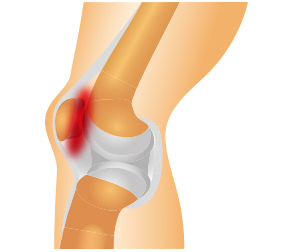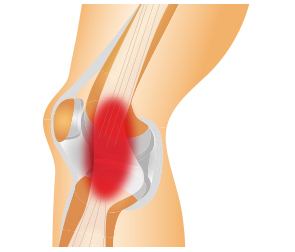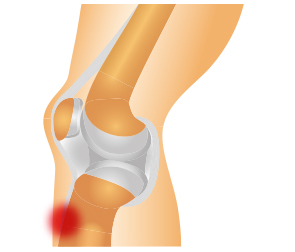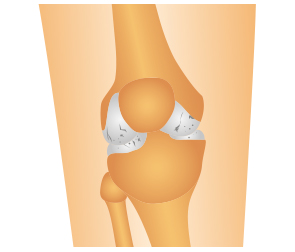Osteoarthritis of the Knee
This is degeneration of the articulating surfaces of the knee joint, areas of cartilage wear over time, these areas can become thinner and can sometimes wear away completely. It is caused by a number of factors, previous injury, being overweight, overuse, misalignment of the joint to name a few. Pain is often felt during or after exercise and may be accompanied by clicking or grating sensation, patients will often complain of stiffness within the joint first thing in the morning or if the joint has maintained the same position for any length of time. Once there is excessive wear it can be difficult to do anything to correct the joint and a knee replacement may be the only answer. It is therefore important to correct the problem before it becomes unmanageable and slow down the progression of the disease.




